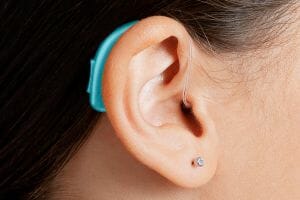Hearing Aids
Purpose
Hearing aids are devices worn in the ear to amplify voices and sounds.
Description
Hearing impairment can be a common feature of FOP and occurs in approximately 50 percent of patients. Hearing impairments usually begin in childhood, so it is important to have kids screened regularly. FOP experts recommend children with FOP should generally have audiology evaluations at least every other year but screenings may be needed more frequently.
The right hearing aids can make a world of difference for your child’s social, educational and communication development. Classroom help with hearing aids
Most hearing aid manufacturers who sell pediatric hearing aids and cochlear implants also make assistive listening devices to enhance classroom learning. One of the most popular option are FM systems. Typically, a teacher wears a microphone and the receiver is attached to the child’s hearing aid
Tips
It can be difficult to keep hearing aids on your child, especially toddlers and children who have not worn them consistently since infancy. If your child resists hearing aids or frequently pulls them off, here are a few tips to help them adjust:
- Practice wearing the hearing aids during a fun activity when they will be distracted and less likely to pull them off.
- Try a soft headband that you can secure over the hearing aids, but make sure the microphone isn’t covered.
- Because hearing aids are expensive, use special clips to keep them attached to your child’s clothes so if they do get pulled off they are easier to find and less likely to become lost.
- If your child is reluctant to wear hearing aids, or new to wearing them, these children’s books about hearing loss may help them emotionally process the experience.
Classroom help with hearing aids
Most hearing aid manufacturers who sell pediatric hearing aids and cochlear implants also make assistive listening devices to enhance classroom learning. One of the most popular option are FM systems. Typically, a teacher wears a microphone and the receiver is attached to the child’s hearing aid.

